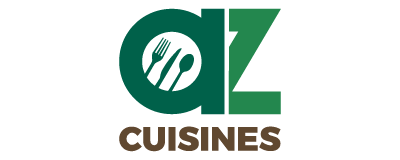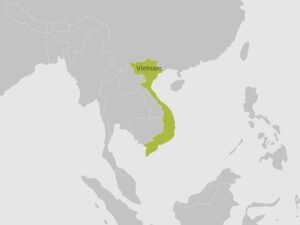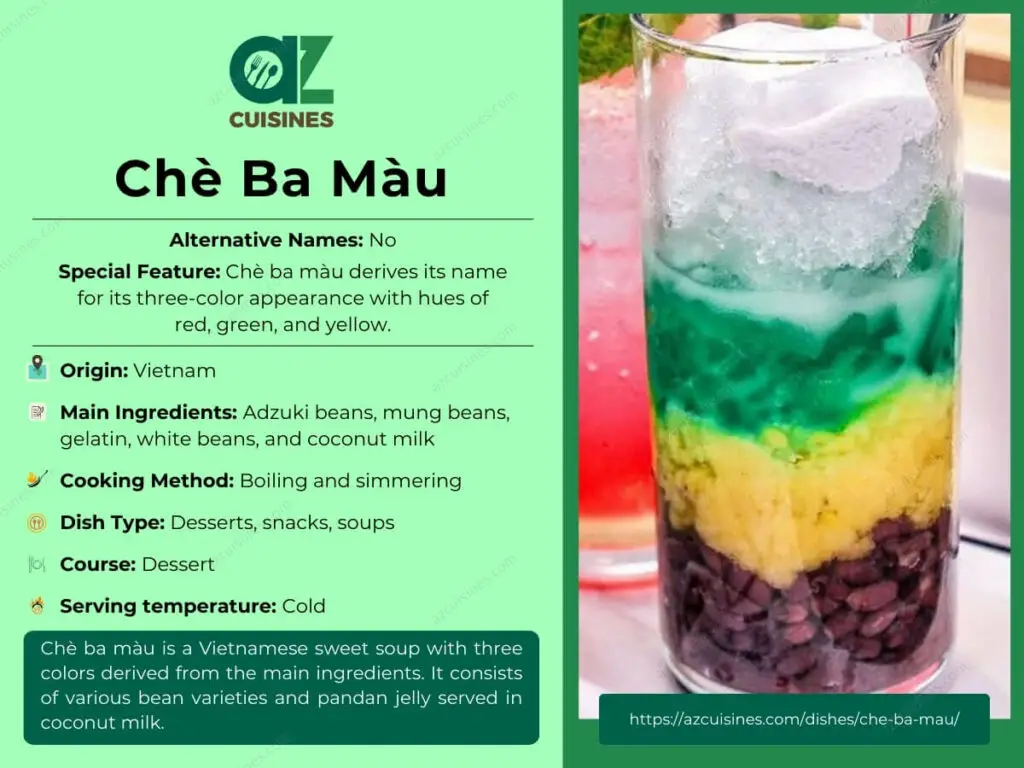Chè Ba Màu: Basic Information
Pronunciation
Alternative Name(s)
Dish Type
Course
Mealtime
Popular Variations
Chè Ba Màu: Ingredients and Preparation
Main Ingredients
Main Cooking Method
Preparation Process
Chè Ba Màu: A Deep Dive
Cultural Significance
Taste
Texture
Aroma
Color
Serving Style
Serving Temperature
Accompaniment
Occasions
Seasons
Special Diets
Calories
Popularity
Popular Similar Dishes
- Bubur Cha Cha
- Thapthim Krop
- Cendol
- Halo-halo
- Tong Sui
Popular Dining Area
Chè ba màu, literally “three-color sweet soup,” is a traditional Vietnamese sweet soup popular throughout the country.
It usually consists of red adzuki beans (or red kidney beans), yellow mung bean paste, green pandan jelly (made from gelatin and pandan juice), and a white coconut milk base.
Chè ba màu is usually served cold as a sweet dessert. While its name is rather similar to chè bà ba, both are different dishes, with the latter as a sweet soup made mainly with coconut milk and tubers.
Many people like to add black-eyed peas or fruits, such as bananas or jackfruits, to chè ba màu.
The main ingredients of chè ba màu are usually arranged in separate layers in a glass. People enjoy this sweet street food by mixing the layers with a spoon before digging in.
Keep on reading to learn more interesting information about chè ba màu, such as its positive and negative attributes. I will also address commonly asked questions about this dessert and suggest similar dishes.
Key Points
Pros and Cons of Eating Chè Ba Màu
You can experience the following advantages and disadvantages when consuming chè ba màu.
Pros
Cons
After going through the pros and cons of chè ba màu, why don’t you take a look at the FAQs section to learn more helpful facts about this dessert?




Truc Tran (Kris)
Senior Food Editor
Expertise
Home Cooking, Meal Planning, Recipe Development, Baking and Pastry, Food Editor, Cooking-video Maker, Vietnamese Food Evaluation Expert
Education
Truc Tran (Kris), an experienced food writer and editor, is great at exploring and describing global cuisines, from simple street food to fancy dining. In her writing, she skillfully mixes different flavors, cooking methods, and culinary traditions, showing the unique character of various cultures through their food and drinks. On azcuisines.com, Kris highlights her knowledge, especially in Asian cuisine and worldwide traditional dishes.